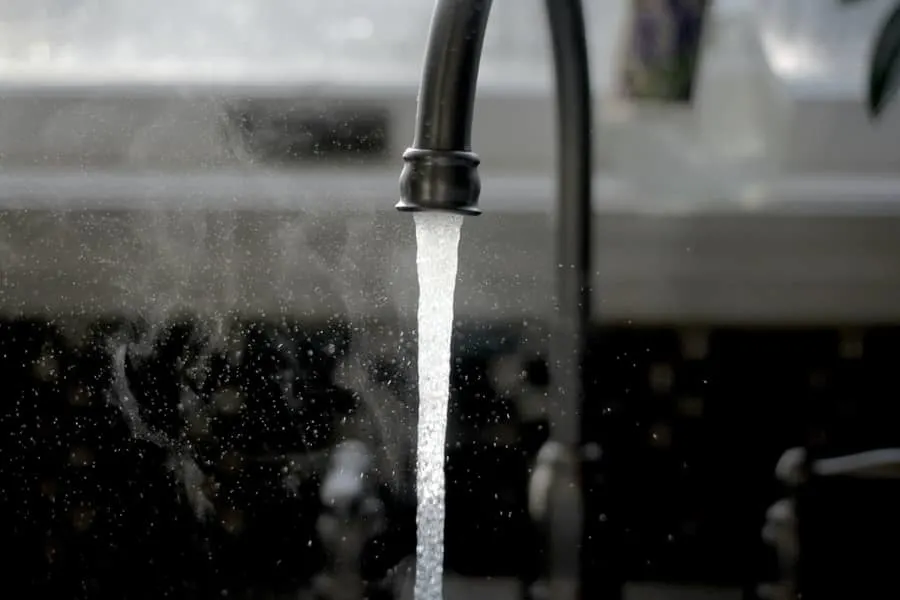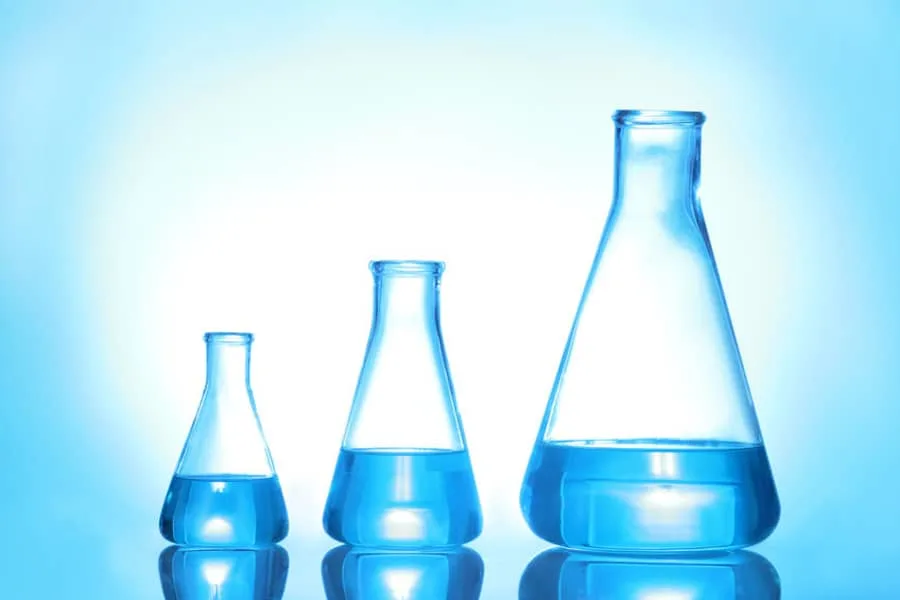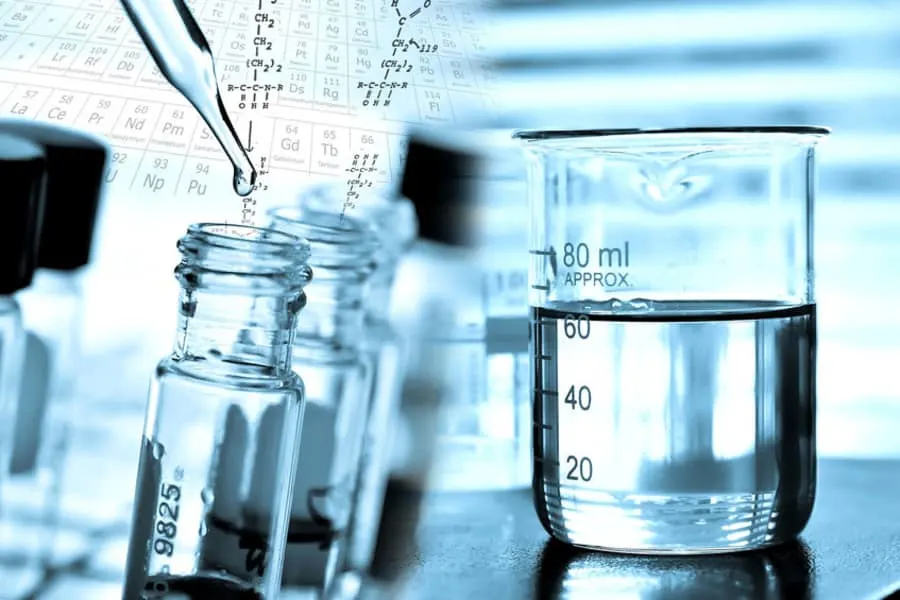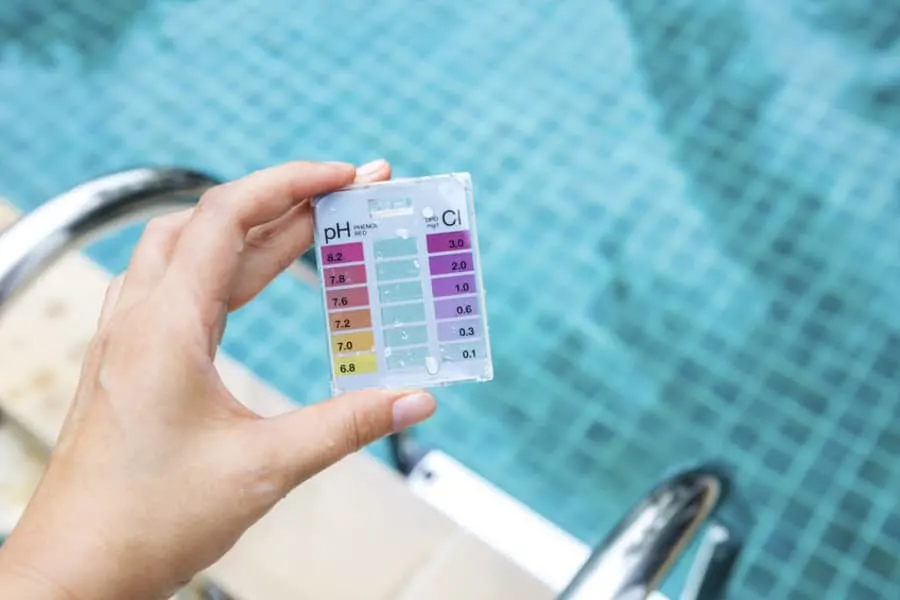This post may contain affiliate links.

Fish are a popular first pet, especially for young kids. A pet can teach children responsibility, and they get to experience the rewarding feeling of caring for another living being. However, it is important that both parents and children are aware of how to keep the fish happy, healthy, and safe.
In order to make your tap water safe for fish, you have to test it for toxic chemicals regularly. You also must ensure that all toxic chemicals have been removed when you change your fish’s water. Many chemicals in our tap water are unsafe and unnatural for a fish.
There are a few ways to ensure that the water is safe and healthy so that your pet can thrive, so read on to find those out. In addition to learning about properly caring for your tank or aquarium, this article will also cover the following:
- What to expect out of different water sources
- Water chemistry and how it affects your fish’s quality of life
- Test kit recommendations
Why Can’t a Fish Live in Tap Water?
There is a lot to know about how to best care for a fish, and both parents and children must understand how to ensure that the water is safe. We all know that fish live and breathe water, so owners must create an ideal environment for their pets.
However, not all water is created equally. It is so much more complicated than it seems, including many different chemicals and elements that are not visible to the naked eye. The composition of your tap water can depend on things such as your location (e.g., urban versus rural) and the source (e.g., well water versus city water).
While many of these water characteristics may apply to your water supply, it is crucial to test your water no matter what. Water quality can vary significantly from place to place, and the following are just generalizations.
Urban vs. Rural
Water quality in urban environments, such as New York City or Chicago, suffers from urban runoff. This is water pollution caused by stormwater drainage, which carries motor oil, gasoline, and other pollutants into the water source with it.
Runoff is the primary source of poor water quality in urban areas, but boats, trash, and industrial discharge are also big contributors. Lastly, the sheer number of people in urban environments means that carbon monoxide, diesel, oils, and gases are released at rates much higher than other areas in order to accommodate their large number of vehicles.
However, if you live in a more rural environment, you are not in the clear. While the water quality won’t suffer from quite the same factors, there are still plenty of pollutants that you should be aware of, particularly in areas with a lot of agricultural activity.
Agriculture has become the number one source of poor water quality in rural areas over the last decade. Mining and logging are contributors as well. Groundwater supplies are vulnerable to pesticides and fertilizers frequently used to produce crops, as they can trickle down to the water supply, with chemicals dangerous to both humans and fish.
City Water vs. Well Water
As you can see, the quality of your water is determined largely by where you live. Tap water in big cities is more likely to have been treated with chemicals, such as fluoride and chlorine. These chemicals are added to the water in order to make it safer for human consumption, but unfortunately, they can be lethal for your pet fish.
Well Water is generally considered much safer and cleaner than city water, as it does not go through the same harsh treatments. Overall, this is a good thing. However, keep in mind what was mentioned earlier. Soils near agricultural activity are at high risk of absorbing pesticides and other chemicals used on crops, which then goes into the groundwater (i.e., well water).
Additionally, well water is revered for its cleanliness and high rates of nutrients or minerals. This is good news for human consumption but can be deadly for your fish friend.
Understanding Water Chemistry for Fish

Perhaps the biggest part of maintaining your aquarium’s health is understanding the different components of your water. You may choose to fill your tank with bottled water or filtered water, but the simplest way is to use tap water. That said, no matter the source, it is still important to determine your water’s quality and characteristics before putting your fish in it.
The quality of your water can quite literally determine whether your fish will live. You need to understand a few things about the composition of water before you begin changing your fish’s water. These include pH levels, ammonia, nitrate, chlorine, nitrite, and hardness. Let’s explore these water chemicals and characteristics and why they are unsafe for fish.
pH Level
You may remember from 8th-grade science class that the water’s pH level (or any type of liquid) refers to its acidity and basicity levels. It is on a scale of 1 to 14, with 7 being the most neutral. Ideally, your tap water’s pH levels will be between 6.5 and 8.5, but it could be much lower depending on the quality.
Generally, a freshwater fish will thrive in an aquarium with a pH level between 6.8 and 7.6, but your fish may require higher or lower levels. Check with your local fish supply store to ensure you know the perfect level for your pet.
It is normal for the aquarium’s pH levels to change over time as water evaporates and the breakdown of organic material takes place. This is okay as long as the pH doesn’t go below or exceed the safe zone for your fish. The most important thing is that the fish is not exposed to a sudden change in pH levels, no matter how slight, as it will be extremely stressful for him and could potentially result in death.
Ammonia
It is important to know that fish are quite susceptible to ammonia poisoning. It is the number one cause of death for fish. Ammonia should be nonexistent in your fish tank or aquarium, which is why it is important to test for it at least once per month. Levels of this chemical compound increase for a number of reasons, including:
- a filter failure
- a rise in pH levels
- the decomposition of fish waste
- the breakdown of their uneaten food over time
- if the water is not cleaned frequently enough.
Additionally, it is not uncommon to find ammonia in many tap water sources, which is why it is important to be aware of the signs. Unfortunately, ammonia is invisible to the human eye and can result in ammonia poisoning for your fish. Ammonia poisoning can kill your fish if levels are extremely high, but keep an eye out for early symptoms.
Your fish may be experiencing ammonia poisoning if it exhibits any of the following symptoms:
- The fish stays at the surface of the water, appearing to gasp for air.
- Its gills begin to take on a red or purple appearance, almost as if they are bleeding.
- It appears lethargic and loses its appetite.
Chlorine and Chloramine
You may be familiar with chlorine as the chemical used to keep swimming pools cleaned. However, what you may not be aware of is that it has been used in public water systems since the early 1900s to kill bacteria and other microbes in our drinking water.
The levels in tap water are low enough that they do not cause any negative health effects in humans. Approximately four milligrams of chlorine per one liter of water is considered safe for human consumption. However, this is not the case for fish. Chlorine is extremely toxic for fish, and it should be removed from the water before it goes into your tank or aquarium. I will go into that in the next section.
Chloramine is a chemical that combines ammonia and chlorine to produce an extra-strong disinfectant. This is not the norm in your tap water, but water companies will sometimes temporarily switch to chloramine if the water supply or pipes need additional cleaning. As with chlorine, chloramine is toxic to fish and should be removed from the water to protect your fish.
Hardness
Hardness refers to the number of minerals in the water, mostly calcium and magnesium. Hard water has many dissolved minerals in it, compared to soft water, which has little to no dissolved minerals. You may be familiar with hard water if you have experienced washing your hands and felt like a film is on your hands after applying soap.
Hard water provides your fish with essential electrolytes that are not available in soft water. Soft water causes quickly fluctuating pH levels, which we know causes a lot of stress on the fish. Excessively soft water is not healthy for your fish.
The water hardness varies for a lot of reasons, but generally, tap water has some degree of hardness, which is what fish need. Unless you have a fish that requires a specific hardness level, most fish owners do not have to worry about this component.
Nitrate
Nitrates are really common in your fish tank. They are produced as a result of the breakdown of food and fish waste. The important thing is not to let the levels of nitrates get too high, as they are toxic to fish.
This can be fixed easily by gradually changing the water. Is it important not to change all of the water at once because the sudden changes will shock the fish. Slowly change out about 10-15 percent of the tank at a time until the nitrates are eliminated from the tank. This should be part of your regular aquarium maintenance.
Nitrite
The final chemical you should be aware of in your water is nitrites. This is the second-largest killer of fish, right behind ammonia poisoning. The scary thing about nitrates is that they develop in the tank right behind high levels of ammonia. If you have the proper amount of good bacteria in your tank, they should be able to fight off the rise in nitrites.
Symptoms of nitrite poisoning are similar to ammonia poisoning, including the fish gasping for air at the top of the tank and appearing lethargic or listless. However, the main difference is that the fish’s gill will turn brown rather than red.
The only way to save your fish from nitrite poisoning is almost a full tank change. I will go over that later.
A Note to Keep in Mind
You may be feeling overwhelmed and scared for your fish’s health and safety after reading of all the ways that they are vulnerable to tap water. Don’t stress! Most of these issues are easily resolved with a water change and a quick test. With just a little bit of diligence, your fish can live a healthy life at a pretty minimal cost to you.
Of course, the scary thing about changing or adding to your aquarium water is that safe water, and lethal water can look exactly the same. Additionally, problems can seemingly develop out of nowhere.
The reality is that most water sources will not have ideal levels of each chemical straight out of the faucet. That is why testing it frequently is vital for a healthy and happy fish. Some types of intervention may be required, but it will likely not be expensive or time-consuming.
Test It for Most Chemicals

Most of the chemicals I mentioned earlier are easily tested with a kit you can purchase on Amazon. This API Aquarium Test Kit is easy to use and tests for pH, nitrites, ammonia, and nitrates. It is also affordable and can be used for over one hundred tests, so you get a lot of bang for your buck.
Now, what do you do once you have tested the water? Of course, it depends on the levels of each.
Measure Water Hardness
Unfortunately, you have to get a separate test to determine the hardness of your water. This API GH and HG Testing Kit will accurately measure the levels of dissolved minerals in your water. It is very simple to use, and similarly to the other test kit, it is affordable and lasts for many tests.
Once you have tested it, you can make adjustments in the water to ensure that your aquarium is just right. If your water is too soft, you can simply replenish it with Seachem Replenish, which will help both restore and maintain appropriate levels of minerals in your water.
The simplest way to decrease the hardness of your water is to dilute it with distilled water. Distilled water has a general hardness of zero, so it should not be used by itself. However, it is a great option to quickly lower the hardness of your tank if it is too high.
Test It for Chlorine
If your water is coming from a public water source, it likely has chlorine in it. It is not worth testing for because the fix is so simple. The simplest way to dechlorinate your water is to let it evaporate. If you have the time, all you have to do is let the water sit out for approximately 24 hours, and it will be ready to go in your fish tank.
If you need to change the water more quickly, there are faster solutions for de-chlorinating your water. All you need is a bottle of API Chlorine Neutralizer. It instantly begins removing chlorine from tanks so that your tap water will be safe for fish.
Adjust the pH Levels

Chances are that the pH level in your tap water will fall within a healthy range for your fish. If your fish requires a higher or lower level than your tap water, this article explains the process of adjusting the pH level. Keep in mind, sudden changes in pH levels can be extremely stressful for your fish.
What About Filtered Tap Water?
You may be wondering if your Brita filter will solve any of these problems. The short answer is no. While it may reduce chlorine levels and some other contaminants, it is not a good alternative for your fish tank. It won’t hurt your fish to use filtered water, but it does not reduce the need for tests and adjustments to your water.
Conclusion
Everything you need to know about maintaining and testing tap water for your aquarium: it may seem overwhelming, but maintaining regular cleanings and testing schedules will make this process a lot more manageable.
While the process is not as simple as filling the tank straight from the faucet, it is a manageable task for new and veteran fish owners alike. It can seem like there are too many components to keep up with to ensure your fish is healthy and happy. If you are comfortable keeping your tank clean and well maintained, then being a fish owner can be rewarding.
Read Also:
